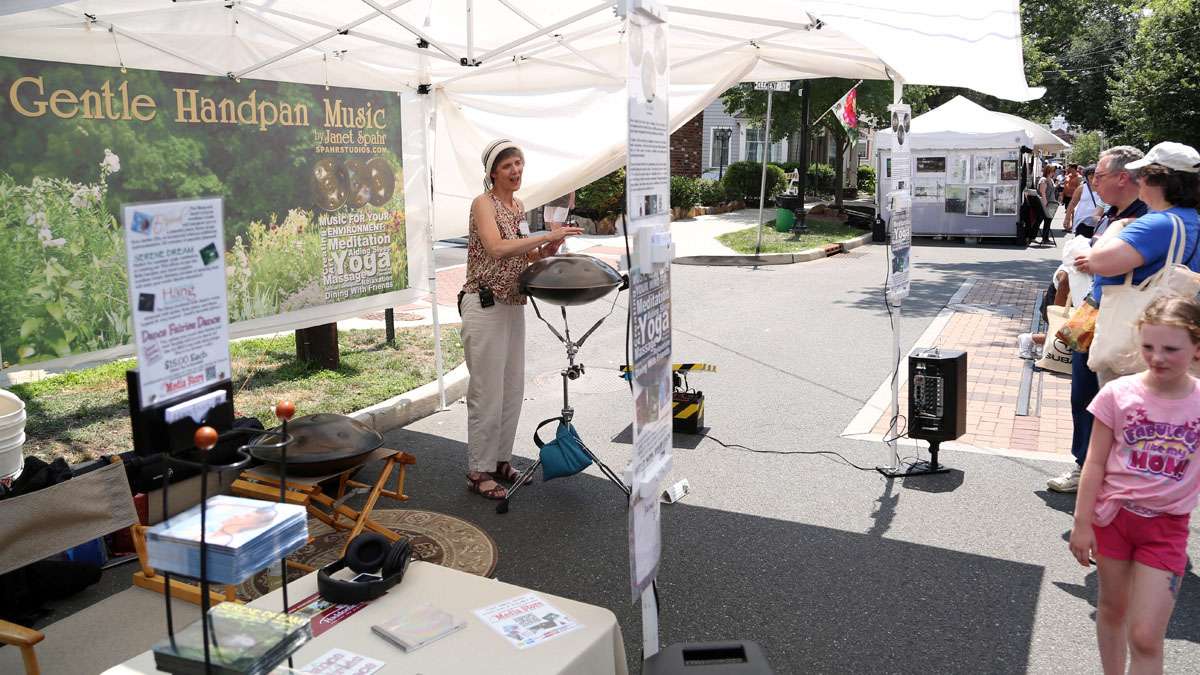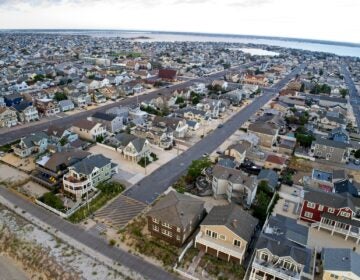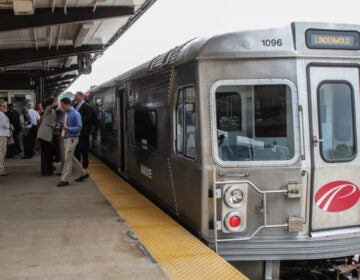Panel: No cheap or painless way to fight global warming
-

-

-

-

-

-

-

-

-

A large crowd attended the 2014 festival. (Natavan Werbock/for NewsWorks)
-

-

-

-

-

-

The biggest challenge to reducing the greenhouse-gas emissions that contribute to climate change in the state is to do so without imposing an unfair cost burden on residents and businesses, according to a new report submitted to the Legislature.
The report is the work of a study group set up by lawmakers to identify ways to comply with an aggressive goal of cutting back pollution that leads to global warming, reducing carbon emissions by 80 percent from 2006 levels by 2050. It recommends that the state focus on three key areas to achieve those targets: transportation; heating and building; and energy production.
It is not going to be easy or painless, witnesses said at a hearing of the Senate Environment and Energy Committee yesterday in the Statehouse Annex on a range of crucial energy issues facing the state.
“There are a lot of great ideas in this report,” said New Jersey Division of Rate Counsel Director Stefanie Brand, who also cautioned “where are our priorities where we want to spend ratepayers’ dollars.”
“The greatest challenge is not the technology,” agreed Malissa Bach, of Direct Energy, saying that reaching those goals could place an unfair expense burden on residents and businesses.
The cost of realizing those goals could run into the billions of dollars for utility customers, who shoulder a big part of the cost of paying for renewable energy and energy-efficiency programs, according to Brand. Those programs help reduce carbon pollution contributing to global climate change.
Others said the state has no choice but to move forward given the implications of climate change, which according to recent federal studies is already happening in the country.
“We don’t have a moment to spare,” said David Pringle, campaign director of Environment New Jersey.”
The report recommended a range of proposals on ways to curb greenhouse gas emissions, ranging from the transportation sector (the largest source of carbon pollution accounting for 42 percent of emissions); to heating and building groups (a source of 33 percent of climate-change emissions); to energy production facilities (contributing 30 percent of the pollution).
In the report, the group recommended the state look at various ways to curb emissions from so-called mobile sources, including ways to reduce vehicles miles, capping how much is spent on building new roads, and encouraging more van-pooling among commuters going to work.
It also suggested the state take a more aggressive approach on land-use policies, directing incentives to communities that encourage the use of mass transit and the development of bicycle parking in new development plans.
None of that is going to be cheap, according to environmentalists.
“Without the money or capital, we’re not going anywhere,” predicted Jeff Tittel, director of the New Jersey Sierra Club and a member of the working group. “We have to find a way to fund it.”
The working group advocated various tax incentives to promote cleaner technologies to reduce greenhouse-gas emissions
New, reliable funding must be identified in order to achieve the required emission reductions, the report said. It urged the Legislature to look at a gas-tax increases, user fees, and other measures. As other studies have noted, increased reliance on the gas tax is problematic as vehicles become more efficient and electric vehicles become more of a reality.
Ed Potosnak, executive director of the League of Conservation Voters and the co-chair of the working group, told the committee they would leave it up to the Legislature to decide how to finance efforts to meet the global warming goals.
The report also calls for measures to reduce carbon pollution from power plants and facilities using fossil fuels, as well as buildings.
Potosnak argued the state should step up efforts to reduce energy consumption by consumers. “The biggest tool we have is energy efficiency,” he said, referring to ways to limit how much energy is used by businesses and residents.
To deal with pollution from buildings, the working group recommended a range of options, including that the state adopt a more stringent building code to incorporate so-called green building standards and encourage more public/private partnerships to facilitate those projects.
The report also recommended that the state ramp up the development of electric charging stations throughout New Jersey. Currently, there are about 120 such plug-in stations—far too few to reduce “range anxiety” among consumers worried about running out of power if their vehicles are not fully charged.
____________________________________
NJ Spotlight, an independent online news service on issues critical to New Jersey, makes its in-depth reporting available to NewsWorks.
WHYY is your source for fact-based, in-depth journalism and information. As a nonprofit organization, we rely on financial support from readers like you. Please give today.




